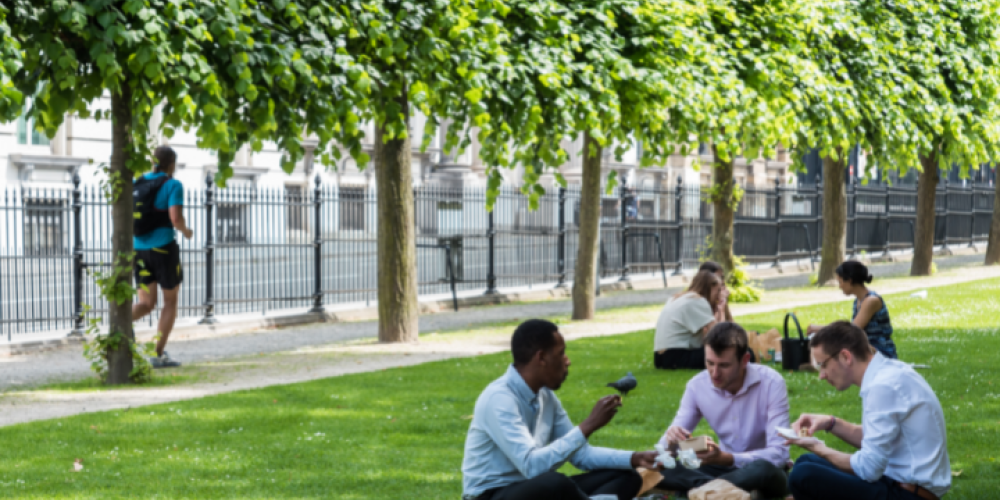
As cities continue to grow, city dwellers face increasing stress from pollution, noise and social challenges. Green spaces are associated with many positive effects. For example, green space in the city provides better air quality, cooling at extreme temperatures and better water management. Parks and other green spaces also provide cultural ecosystem services: non-material functions such as rest and relaxation, recreation, aesthetic experience and contact with nature, each of which contributes to mental and physical health.
It is essential that city dwellers have access to high-quality green space so they can benefit from these ecosystem services. “In our study, the proximity of public green spaces in Brussels was mapped out and tested against how people in Brussels experience the accessibility of parks and other green spaces in their area,” says Stessens. The results show that while Brussels is a relatively green city compared to other cities in Europe, with more than half of the total area occupied by public and private green space, more than one-fifth of Brussels residents (21%) do not have sufficient access to public green space and 4% have no access at all, at least not within a perceived reasonable distance.
Stessens: “We also developed a model that links characteristics of green spaces, such as surface area, density of trees and other vegetation, indicators of biodiversity, presence or absence of water, and noise levels, to how residents who participated in our research experience the quality of green spaces. The findings suggest that inhabitants of the city centre need to travel further to reach green areas and that these are often of lower quality than in the suburbs. The distances to be covered are on average greater than the international standard.”
Green in cities – necessary for the climate too
The fact that socio-economically vulnerable members of the public have insufficient access to green space makes this group all the more vulnerable to the heat island effect in the city. Access to high-quality green spaces is therefore an issue of environmental justice. The Brussels government architect has repeatedly mentioned the relevance and urgency of increasing the amount of urban green space. In 2013, the Brussels-Capital Region established that all inhabitants should have access to public green space within 200m of their home, and public green space of at least 1 hectare within 400m.
Further research through citizen science
Design research by VUB and ULB shows that scenarios for improvement are feasible, but higher than average investment is required. The research, led by Frank Canters (VUB) and Ahmed Khan (ULB), is now continuing in the Innoviris-funded CO-NATURE project, which has a clear social goal: How can we tackle social inequality in terms of unequal distribution of green space?
The project aims to examine which green elements can be added to the urban landscape to meet the needs of the 25% of the population who do not have access to this resource. Researcher Amy Phillips: “It is important that we know who has access to green space and who does not, so we can eliminate this inequality. At the same time, previous research suggests that what is considered an ideal green space can vary considerably, depending on age, gender, socio-cultural background and individual preferences. This relationship will be further explored. For optimal planning of green spaces, the specific preferences of different population groups must be taken into account, both in terms of the characteristics of the green space and the services the green space must offer.”
All inhabitants of Brussels are invited to participate in the study via an online survey and to share their views on what green space in the city means to them, how they use green spaces in Brussels, and what they think of the green spaces in their neighbourhood. You can do this at www.co-nature.org/survey (NL-EN-FR).